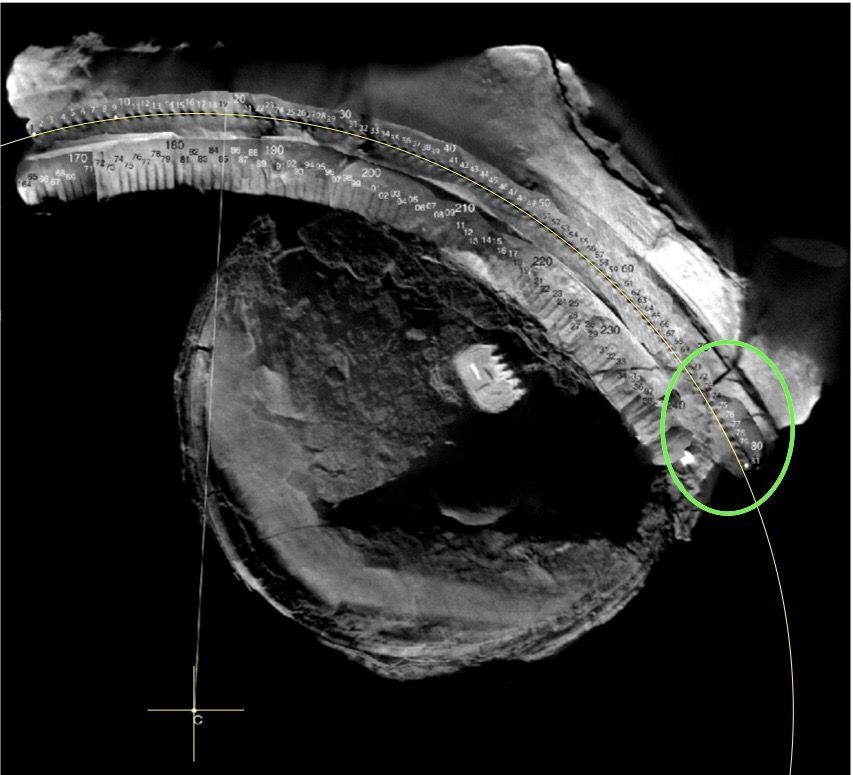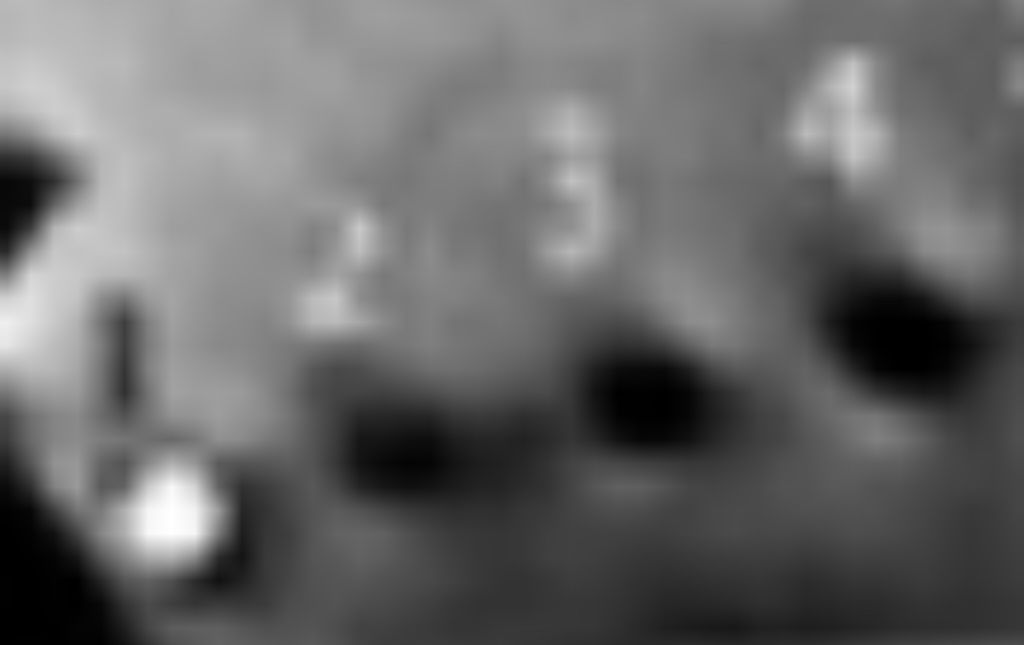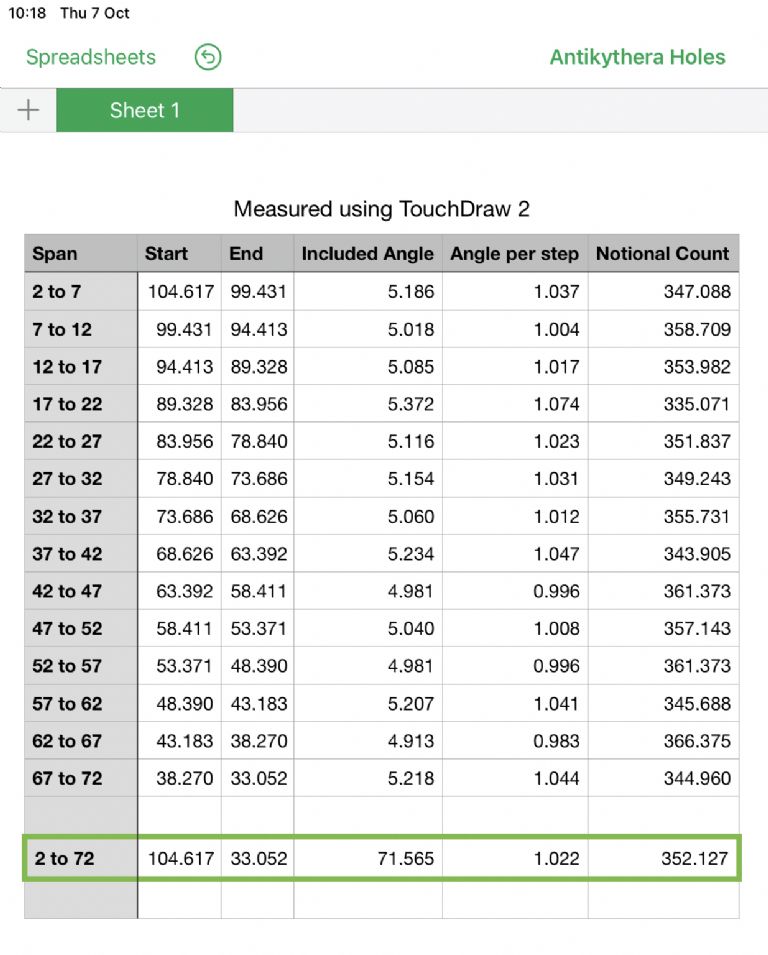Posted by Michael Gilligan on 05/10/2021 22:50:01:
[…]
They have obscured the hole numbered 1, so I suggest we need to start at 2
The presumably-displaced group starts at 73 … so realistically we have 2 to 72 available for investigation.
I plan to measure the angle subtended by various groups of holes and do some simple statistics
… The big problem is the low resolution of the image, and therefore the difficulty in locating centres of holes !
360/355 is difficult to distinguish from 360/354 when you are measuring fog. …
MichaelG.
.
Well … I’ve had a go, and it’s even worse than I anticipated 
First I scaled the photo up by 500% and then drew lines from the marked centre to [my best estimate of] the centre of various holes, and recorded the angle subtended by each five steps.
Tabulated and calculated:

.
The result is, to say the least, unconvincing !
It is, however, reasonably predictable when we remember that tiny angular difference between 355 and 354 holes.
If anyone would like to repeat the exercise, as a check on my work … Please Do
MichaelG.
david bennett 8.









